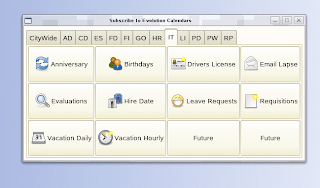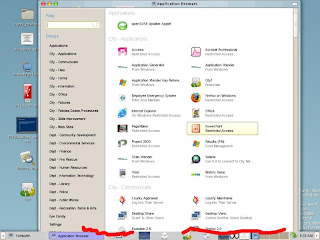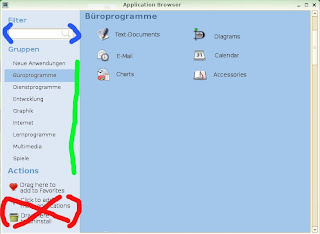I was asked to publish the objectives of our OpenOffice Writer test. The goal of this testing is to increase skills, and will also be used with new hires. Robust word processing skills are far more rare than many of you probably perceive. We are seeing that most people still use computer software as you would a typewriter.
The objectives:
Level 1
Level 1 File Management
-Create, open, name, and save files.
-Navigate a file structure to a specific file or directory.
Level 1 Text Formatting
-Copy, cut, and paste text.
-Format text with font, font size, emphasis such as underline.
-Format text with foreground and background color attributes.
-Align and indent text using formatting techniques instead of spaces or tabs.
-Use spellchecking tools to identify and correct misspelled words.
Level 1 Graphics
-Add graphics to a document using the Gallery or by navigating to a graphics file.
-Position graphics within a document.
-Copy, cut, and paste graphics from one spot within a document to another.
-Resize graphics.
Level 1 Lists
-Apply automatic numbering and bullet formatting to text.
-Select a specific number format and bullet format for the list.
-Indent list items to create subitems.
Level 1 Tables
-Create and delete tables.
-Create tables with or without specified attributes.
-Apply table formatting such as shading to existing tables.
-Add and remove rows and columns.
-Control table and column size.
Level 1 Page Setup
-Insert automatic data fields.
-Set margins and page orientation.
-Insert page breaks.
-Add content and page numbers to headers and footers, and format the content.
-Format pages with borders and shading.
Level 1 Printing
-Print to default or another printer.
-Print specific pages.
-Create a PDF copy of a document.
Level 2
Level 2 Text Formatting
-Apply spacing between lines and above and below paragraphs.
-Modify text appearance and capitalization through formatting.
-Apply borders to paragraphs.
-Indent paragraphs using an exact amount, and indent the first line of the paragraph differently -than the rest of the paragraph.
-Apply specified tab stops.
-Uses special characters in text such as an accent or other symbol.
-Link text to open a web site or document.
-Copy existing formatting from one piece of text to another.
Level 2 Graphics
-Control how text and graphics are positioned in relationship to each other, such as wrapping.
-Resize graphics proportionately.
-Apply formatting such as a border to a graphic.
-Modify the picture using effects such as grayscale.
Level 2 Lists
-Specify different number and bullet formatting for different levels in a list.
-Change level for an item, to demote it or promote it in a list.
-Restart or continue numbering to split or join lists.
-Add an unnumbered paragraph within a list.
Level 2 Tables
-Align tables.
-Control column size using automatic formatting.
-Remove formatting from a table.
-Merge and split cells.
Level 2 Page Setup
-Apply columns.
-Apply background graphics to page formatting.
-Change page number type and specify which pages page numbers appear on.
Level 2 Printing
-Use page preview.
-Use OpenOffice features to email a document in its current form, Microsoft form, and PDF form.
-Print specified-only pages of a document to PDF.
-Print multiple pages on a sheet.








































